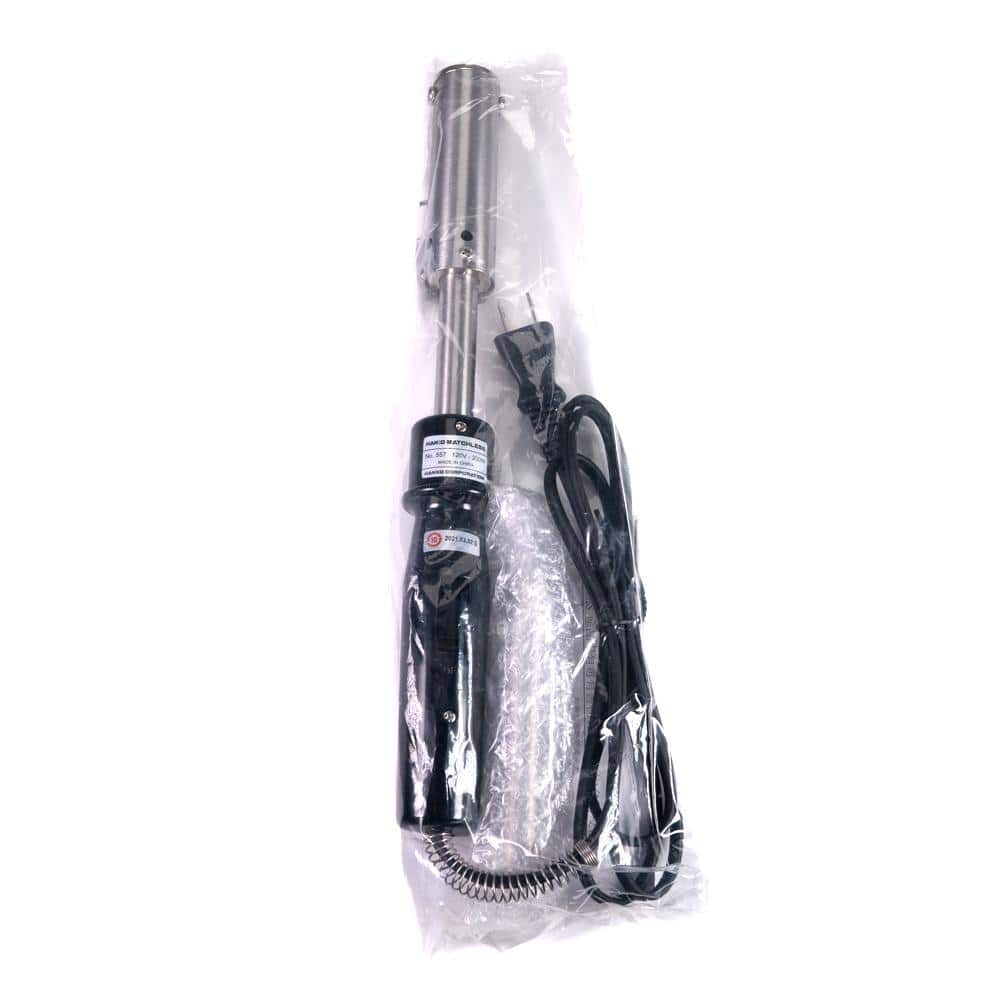Driverj30t9
Member
- Joined
- May 22, 2018
- Messages
- 97
Does anyone use a 240V outlet or transformer for radio/electronics applications? I read that somtimes you need to use a high heat wattage soldering iron. 120Vs won't cover it for one of those??
Good heaven! What sort of industrial soldering are you doing on a 240V outlet?
Good heaven! What sort of industrial soldering are you doing on a 240V outlet? Since this is posted in the Amateur Radio Equipment forum, I will assume you already know that many RF linear power amplifiers require 240V outlets? Just like your electric dryer. Or is that not a valid assumption?
Are you suggesting using a 120V iron on 240V to make it hotter?
DON'T DO THAT. If you need more heat get a bigger iron or gun.
A Weller D550 soldering gun provides dual heat 200watt/260watt (old model was 240w/325w). This should be plenty for any heavy duty soldering around the radio shack. It runs on 120 volts AC.
two in series, with a friend ?
Stick welder?
<---- Welding pro here BTW Learned in Job Corp.
Yeah, much of the world uses 240 volt outlets. Trying to sell them a 120 volt appliance would be futile. It has nothing to do with wattage / heat levels.Yep, thought I saw one that was 240V on amazon and didn't see any above 30 or 40 watts.
Maybe that's what I was looking at. Good to have skills. Maybe you could use welding for ground radials for an antenna. Never put one up so don't know.
Yeah, much of the world uses 240 volt outlets. Trying to sell them a 120 volt appliance would be futile. It has nothing to do with wattage / heat levels.
I have the Weller WES50 (similar to the 51), it's 50Watts, does just about everything. Their WLC100 is 40Watts and a favorite of many. Pencil types range from 10 to 100Watts, gun types are generally larger. Hakko (perhaps the best), Lenk, Stahl, Solomon, and others are out there in numerous sizes. I too have a Weller D550, very good for larger things. Note, the 550 was produced with at least 3 different tip attachment methods. They are incompatible with one another. The earliest versions are still useful and tips available. Of course the latest are as well. The middle models however use an 'acorn' nut, a long hex nut with a hole through it goes through the tubes of the iron and an acorn nut tightens. These are no longer made and did not work very well. The metal got very soft and you couldn't tighten the tip. So if you buy used be aware of this. The newer ones have a collar that threads on, screw from side to tighten, they can be replaced. The oldest ones have a nut threading into the end of the tube. The only odd thing about the 550 is the trigger for the dual range, 260 or 200 Watts, the first position is high and the second is low. If you use one of these and it doesn't seem to be getting sufficiently hot your tip is too loose. You have to keep them very tight. It will get blazing hot in a few seconds.
You need to use the model intended for the voltage.
Brass welding rods make nice antenna elements.
Oxyacetylene, stick, wire fed, I can do it. I tried my hand at TIG but I kept contaminating the tip. Though, I wasn't into it that much. I can also cut steel with laser precision. Everyone wanted me to cut their steel since it required very little grinding
Hmmm. Nice.
The only ham related items I'm aware of in the States that use 240VAC are some higher powered amps.
For when you just have to cut through the pile up, or bad conditions I guess.

A 120V appliance can generate up to 1800 watts of heat. I don't think you have any radio/electronics stuff that would survive that. So no need for a 240V device unless you live in a part of the world that runs off 240V.
If you want lots of watts, here you go:

Hakko 200-Watt Matchless 557 Soldering Iron with Tip 557V-V12/P - The Home Depot
Visit the Home Depot website to buy 200-Watt Matchless 557 Soldering Iron with Tip Model# 557V-V12/Pwww.homedepot.com
Just don't expect to use it on actual electronics, like circuit boards.
I doubt 200 watts would be enough for gutter work. I'd use a torch for that. Hit the copper with the flame and feed in the solder. Similar to soldering copper pipes.
What's the highest temp then I can use on circuit boards without damaging stuff? What would I need for soldering/welding radials for an antenna?? I'm a driver and I've seen loads locks laying around that drivers have left or forgot and I've thought about using them as ground radials for a vertical, but it might be better to connect them all with solder or whatever you use with welding. Don't know a thing about it.

